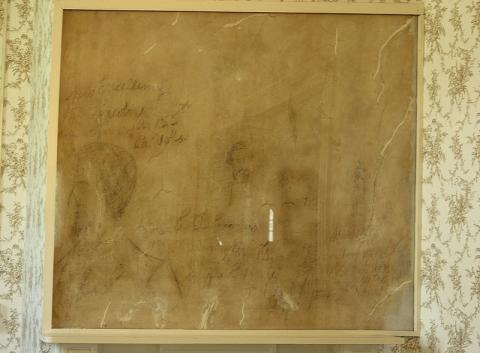While a serious online archive is coming that "will provide scholars, students, and the public access to the graffiti and a reasonably large collection of ancillary archival material associated with the graffiti," Dr. Stephen Robertson has a basic website up that does a great job discussing types of Civil War-era graffiti, mapping the examples, giving interpretations, and even featuring some of the soldiers who marked up walls. Below is Dr. Robertson's text from his About page. Make sure to navigate the drop-down links under the "Types of Graffiti" to see photos. - Stencil Archive

Soldiers in the American Civil War left graffiti in many of the places they spent time, including homes, churches, hospitals and caves. Using charcoal, pencils and knives, they commonly wrote their names, usually adding their regiments and the date they wrote. Soldiers also drew pictures of battlefield scenes, political images and sexual material. Very few of these soldiers wrote anything else that has survived, so they represent Americans whose wartime experiences and lives have attracted little attention from historians. But they have left other traces in the historical record from which their lives can be reconstructed.
This site presents research done for classes and workshops focused on soldiers who left graffiti taught by Professor Stephen Robertson of George Mason University. From 2014 to 2016, students who took his section of HIST390 The Digital Past developed exhibits telling the story of an individual solider who left graffiti at Blenheim House, a farmhouse built in 1860 now owned by the City of Fairfax. The students work was made possible by the generosity of Andrea Loewenwarter, Manager of Historic Blenheim, who shared the military service and pensions records related to those soldiers that she and her volunteers had gathered from the National Archives. Teachers who participated in the National Endowment for the Humanities Landmarks in American History and Culture Workshop for Teachers "Graffiti Houses: The Civil War from the Perspective of Individual Soldiers" in summer 2016 also created exhibits about Blenheim House soldiers, as well as soldiers who left graffiti at the Graffiti House at Brandy Station and at Ben Lomond.
In addition, this site draws on the work of Katherine Reed to offer a catalog of Civil War graffiti sites and graffiti, collecting material developed by staff and volunteers at the sites, available online, and gathered by site visits.
